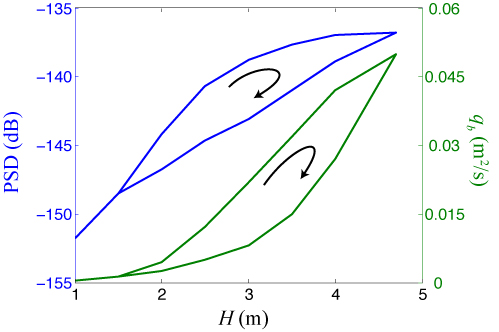Modeling Seismic Noise from Sediment Transport

Measuring sediment flux in rivers remains a significant problem in studies of landscape evolution.
The component of sediment transport that moves by saltation, known as bedload, is particularly difficult
to measure, partly due its unsteady character. One potential way that we can measure this component of
sediment flux is by listening to the seismic noise generated by the impact of sediment particles on the
river bed. While this technique is quite promising, it has been difficult to quantitatively relate
seismic measurements with sediment flux due to a lack of model for how the seismic noise is generated.
We have addressed this problem by providing a first-order parameterization for this process (Tsai et al. 2012).
See publications for more details.
The plot at right shows how one can use observations of seismic noise (blue curve, plotted here against water
level observations along the Trisuli River in Nepal) to invert for the amount of bedload sediment flux
(green curve). The arrows denote the
direction of the seasonal changes observed and modeled (with peak noise observed in August, coinciding with
the peak discharge due to monsoonal runoff).
